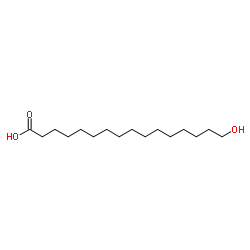Expression of glycine-rich protein genes, AtGRP5 and AtGRP23, induced by the cutin monomer 16-hydroxypalmitic acid in Arabidopsis thaliana.
Jong Ho Park, Mi Chung Suh, Tae Hyun Kim, Moon Chul Kim, Sung Ho Cho
Index: Plant Physiol. Biochem. 46(11) , 1015-8, (2008)
Full Text: HTML
Abstract
Glycine-rich proteins (GRPs) belong to a large family of heterogenous proteins that are enriched in glycine residues. The expression of two GRP genes of Arabidopsis thaliana, AtGRP5 and AtGRP23, was induced by 16-hydroxypalmitic acid (HPA), a major component of cutin. The expression of AtGRP3, which encodes a GRP protein that is structurally different from AtGRP5 and AtGRP23, was not responsive to HPA application. Treatment with HPA also induced expression of the pathogen-related PR-1 and PR-4 genes. Abscisic acid and salicylic acid treatments enhanced the transcript levels of AtGRP5 and AtGRP23 as well as those of AtGRP3. It was also demonstrated that HPA effectively elicited the accumulation of H2O2 in rosette leaves of Arabidopsis. Results suggest the possible role of some species of GRPs, such as AtGRP5 and AtGRP23, in response to the pathogenic invasion mediated by cutin monomers in plants.
Related Compounds
| Structure | Name/CAS No. | Molecular Formula | Articles |
|---|---|---|---|
 |
16-hydroxypalmitic acid
CAS:506-13-8 |
C16H32O3 |
|
Characterization of sophorolipid biosynthetic enzymes from S...
2015-11-01 [FEMS Yeast Res. 15 , (2015)] |
|
CYP77A19 and CYP77A20 characterized from Solanum tuberosum o...
2014-09-01 [Plant Cell Environ. , doi:10.1111/pce.12298, (2014)] |
|
The omega-hydroxy palmitic acid induced apoptosis in human l...
2002-02-01 [J. Biochem. Mol. Biol. Biophys. 6(1) , 37-43, (2002)] |
|
Binding of two mono-acylated lipid monomers by the barley li...
2001-01-01 [Eur. J. Biochem. 268(2) , 384-8, (2001)] |
|
An investigation of the likely role of (O-acyl) ω-hydroxy fa...
2013-10-01 [Exp. Eye Res. 115 , 57-64, (2013)] |